
The Northeast Passage is the shipping route between the Atlantic and Pacific Oceans, along the Arctic coasts of Norway and Russia. The western route through the islands of Canada is accordingly called the Northwest Passage (NWP).

A nuclear-powered icebreaker is an icebreaker with an onboard nuclear power plant that produces power for the vessel's propulsion system. Although more expensive to operate, nuclear-powered icebreakers provide a number of advantages over their diesel-powered counterparts, especially along the Northern Sea Route where heavy power demand associated with icebreaking, limited refueling infrastructure along the Siberian coast, and endurance required make diesel-powered icebreaker operations challenging. As of 2023, Russia is the only country that builds and operates nuclear-powered icebreakers, having built a number of such vessels to aid shipping along the Northern Sea Route and Russian arctic outposts since the Soviet era.

Severnaya Zemlya is a 37,000 km2 (14,000 sq mi) archipelago in the Russian high Arctic. It lies off Siberia's Taymyr Peninsula, separated from the mainland by the Vilkitsky Strait. This archipelago separates two marginal seas of the Arctic Ocean, the Kara Sea in the west and the Laptev Sea in the east.

The Northern Sea Route (NSR) is a shipping route about 5,600 kilometres (3,500 mi) long, defined by Russian legislation as running from the entrances to the Novaya Zemlya straits in the west, along the Russian Arctic coast above Siberia through the Kara Sea, Laptev Sea, East Siberian Sea, and Chukchi Sea, to Cape Dezhnyov on the Bering Strait, at parallel 66 ° N and meridian of 168 ° 58′37 ″ W.

Boris Andreyevich Vilkitsky was a Russian hydrographer and surveyor. He was the son of Andrey Ippolitovich Vilkitsky.
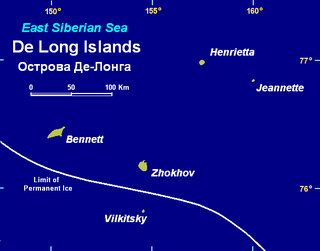
Vilkitsky Island is the southernmost island of the De Long group in the northern part of the East Siberian Sea. The nearest island is Zhokhov Island. Administratively Vilkitsky Island belongs to Yakutia, an administrative division of the Russian Federation.
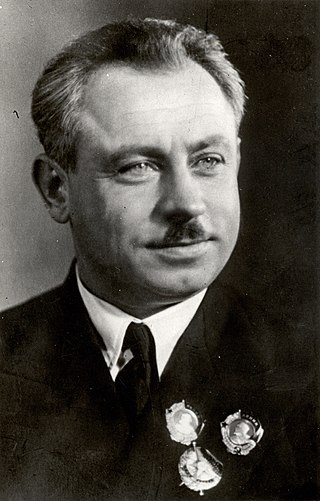
Ivan Dmitriyevich Papanin was a Soviet polar explorer, scientist, Counter Admiral, and twice Hero of the Soviet Union, who was awarded nine Orders of Lenin.
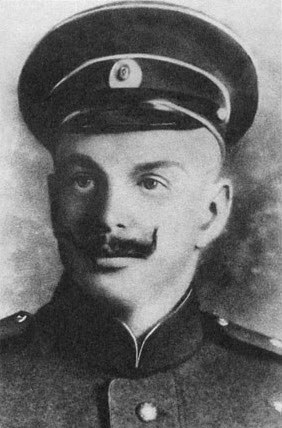
Georgy Lvovich Brusilov was a Russian naval officer of the Imperial Russian Navy and an Arctic explorer. His father, Lev Brusilov, was also a naval officer.

The Nordenskiöld Archipelago or Nordenskjold Archipelago is a large and complex cluster of islands in the eastern region of the Kara Sea. Its eastern limit lies 120 km (75 mi) west of the Taymyr Peninsula.

Taymyr is a shallow-draft nuclear-powered icebreaker, and the first of two similar vessels. She was built in 1989 for the Soviet Union in Finland, at the Helsinki Shipyard by Wärtsilä Marine, by order of the Murmansk Shipping Company. Her sister ship is Vaygach.
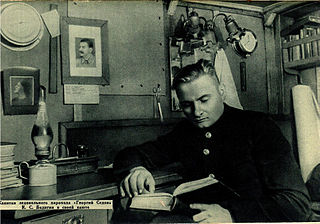
Captain Konstantin Sergeyevich Badygin was a Soviet naval officer, explorer, author, and scientist.
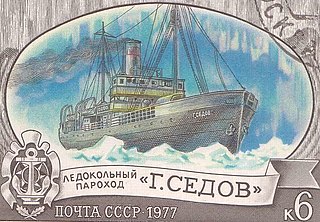
The Georgiy Sedov was a Soviet ice-breaker fitted with steam engines. She was originally the Newfoundland seal fishery support vessel Beothic and was renamed after Russian captain and polar explorer Georgy Yakovlevich Sedov in 1915.

The icebreaker Fyodor Litke was active in the Soviet era in the Arctic, until the late 1950s. It was built in 1909 in England for the Saint Lawrence River service and initially named CGC Earl Grey after Albert Grey, Governor General of Canada. After four years in Canada it was sold to the Russian government and eventually renamed Fyodor Litke in honour of the Arctic explorer Fyodor Petrovich Litke.

Icebreaker Vaygach was an icebreaking steamer of moderate size built for the Russian Imperial Navy at Saint Petersburg in 1909. She was named after Vaygach Island in the Russian Arctic.
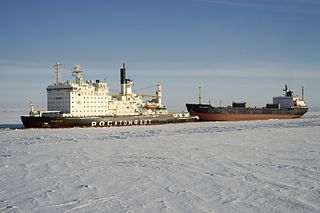
Vaygach is a shallow-draught nuclear-powered icebreaker. She was built in 1989 for the Soviet Union by Wärtsilä Marine Helsinki Shipyard in Finland by order of the Murmansk Shipping Company and its KL-40 reactor was installed at the Baltic Shipyard in St. Petersburg. Her sister ship is Taymyr.

Nikolai Nikolaevich Kolomeitsev, also spelt Kolomeytsev was a naval officer of the Russian Empire and Arctic explorer.
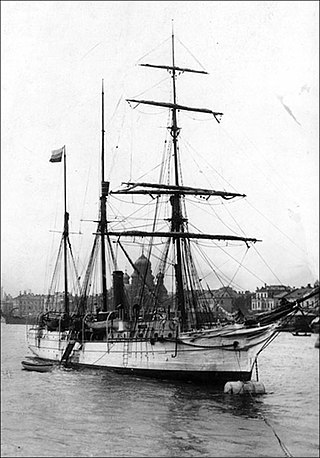
The Brusilov expedition was a Russian maritime expedition to the Arctic led by Captain Georgy Brusilov, which set out in 1912 to explore and map a route from the Atlantic Ocean to the Pacific via a northeast passage known as the Northern Sea Route. The expedition was ill-planned and ill-executed by Brusilov, and disappeared without a trace. Earlier searches were unsuccessful, and the fate of the ship and its crew is still not known.

The Arctic Ocean Hydrographic Expedition (GESLO) (1910–1915) was a scientific expedition organized by Russia for the purpose of the development of the Northern Sea Route.
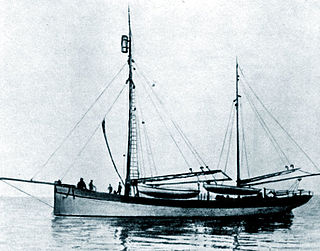
The Rusanov expedition, led by geologist Vladimir Rusanov, was a 1912 Russian expedition to the Arctic, with an initial objective of establishing mineral claims on Spitsbergen. Following completion of its official programme, Rusanov expanded the expedition's scope to include an investigation of the Northeast Passage, though it remains unclear exactly which route he proposed to take. Rusanov's ship Hercules reached Novaya Zemlya in August 1912, where he sent a message that he was continuing east; this was the last ever heard of the expedition and its 11 personnel.




















